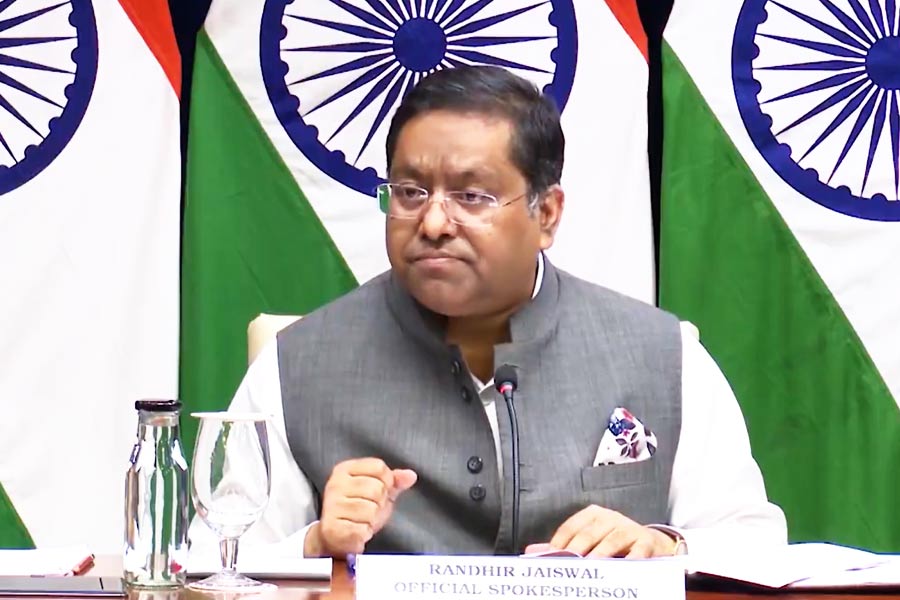 |
While her contemporaries were being wooed by private practice or fat salaries, Andezhath Kumaran Susheela had chalked out a different route. The doctor — who retired 15 years ago after an illustrious three decades at the All India Institute of Medical Sciences, New Delhi — did not want a quiet post-retirement life. On the contrary, she had a war to wage — against a poison called fluoride.
Experts have long warned that excess intake of fluoride, which enters the body via untreated water and food, leads to fluorosis that affects the teeth and bones. While moderate amounts lead to mottling of the teeth, long-term effects include skeletal deformities such as knock-knees and bow legs. The world over, fluoride content in drinking water supply is regulated to curtail poisoning.
Though India has legally limited fluoride in drinking water to 1 milligramme per litre, fluorosis continues to be a major public health problem. Rural populations depend on groundwater, which is often contaminated. A nation-wide study for Unicef carried out by the Fluorosis Research and Rural Development Foundation (FRRDF), founded by Susheela, showed that fluorosis is endemic in 19 out of 35 states and Union territories. As many as 60 million people — five in every 100 Indians — suffer from moderate to severe fluorosis.
But there is more to fluoride poisoning than meets the eye as research by 75-year-old Susheela and her colleagues at the foundation has revealed. For instance, they have found that contrary to popular belief, drinking water is not the only way fluoride enters the body. Many food ingredients and beverages, which are routinely consumed, have ample concentrations of fluoride. Rock salt, which gives a distinct taste to street food such as golguppas and packaged food products such as namkeen, contains high amounts of fluoride.
“When these products are consumed regularly for long periods, fluoride accumulates in the body,” Susheela told KnowHow from a modest east Delhi flat, which serves as FRRDF’s office.
Black tea is another culprit. Tea leaves have unsafe levels of fluoride as tea is usually grown in acidic soils, which have a high fluoride content. When milk is added to tea, the calcium in it neutralises the fluoride.
 |
| A. K. Susheela |
Another shocking revelation is fluoride’s effect on anaemia. Studies have shown that fluoride destroys red blood cells, contributing to the loss of haemoglobin. As a result, if a person is suffering from fluorosis, his or her anaemia does not get cured despite treatment, says Susheela.
This probably explains why India’s national programme to control anaemia has failed to have an impact. Expectant mothers who attend ante-natal clinics in government hospitals are given iron and folic acid tablets in the expectation that it would improve their haemoglobin count, which would help deliver healthy babies. Iron deficiency in pregnant women leads to multiple problems such as higher rates of miscarriages and maternal mortality. It is also a high risk factor for low birth weight babies, who can face irreparable brain and thyroid damage.
Despite the billions of iron pills distributed each year, India is still at the bottom of the global chart when it comes to maternal deaths. According to a 2011 Unicef report, it also has the highest percentage of low birth weight babies — 43 per cent as opposed to the world average of 25.
Susheela thought that if handing out iron tablets was not making things better, it was time to find out why. “Health officials say that the condition hasn’t improved because women are not taking the medicine. This is untrue. Pregnant women take their health seriously as they know that otherwise it could be bad for the baby,” she observes.
So the foundation enlisted a large number of pregnant women visiting ante-natal clinics in a government hospital for a study. The study, published in 2010 in the Current Science journal, was revealing. “We found that most low-haemoglobin pregnant women had relatively high fluoride content in their urine, indicating that their intake of the chemical is higher than it should be. But our investigations showed that a majority of them drink water which has fluoride within safe limits. Subsequently, we found that most of them have a craving for street food, which often contains rock salt,” she says.
When they stopped taking food containing rock salt and replaced them with leafy vegetables, there was remarkable improvement in their haemoglobin levels. All of them delivered babies with a healthy birth weight, ranging from 2.5 to 3.9 kg.
Encouraged by these results, the foundation, with funding from the Indian Council of Medical Research, launched a programme in a government girls’ school in Delhi to prevent anaemia by discouraging them from eating street food. The pilot study, completed last year, had an encouraging result. “Our effort was to prove that the deterrent in improving haemoglobin is high fluoride intake. Besides, with proper diet haemoglobin levels will improve, even without iron tablets,” says Susheela.
Studies by the foundation have also shown that fluoride poisoning is no longer a problem of the poor. A large number of people from middle and upper class families also suffer from it. It emerges in different forms such as stomach discomfort and hip, knee and joint pains. “The limited awareness about fluoride poisoning among doctors makes diagnosis difficult,” Susheela says.
Many fluoride poisoning patients undergo expensive knee and hip replacement surgeries, without realising minor lifestyle adjustments can actually flush out fluoride from the body, offering relief in a very short time. What is important is to test blood and urine samples of the patient and see whether there is excess fluoride. Currently only a few centres in the country offer such services.
Susheela laments that fluoride poisoning is not getting the attention it deserves. She points out that it also destroys good gut bacteria and upsets normal vitamin B12 production, among other things.
But the problem has an easy solution. Think twice before you pop that phuchka into your mouth. And give up black tea.










